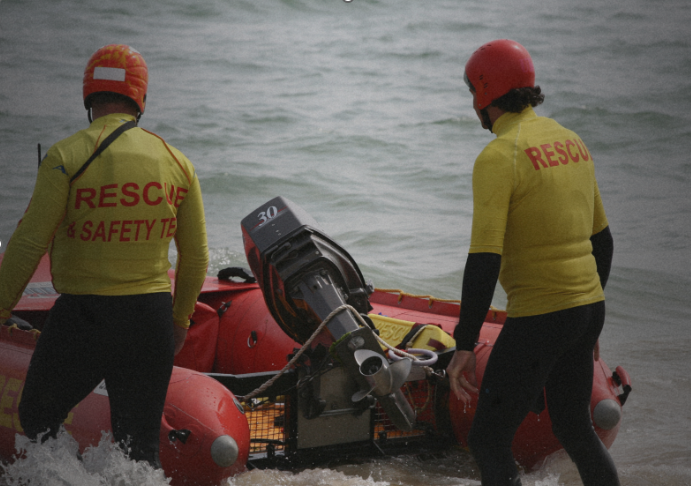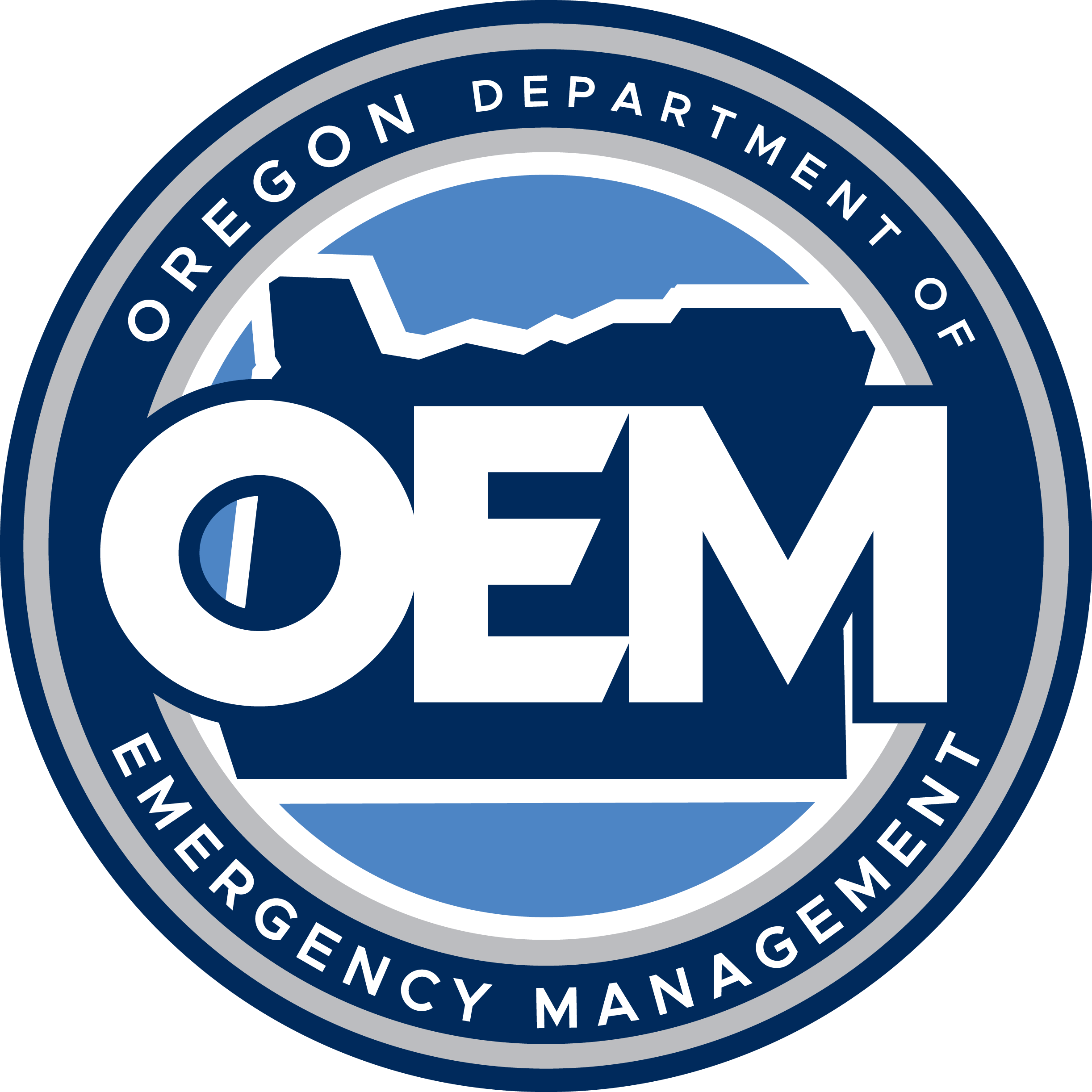Oregon Deploys Swift Water Rescue Team To Assist Washington Flood Response (Photo)
- 12/12/25

SALEM, Ore.--Washington state is currently experiencing major flooding that is impacting multiple communities, and Oregon is stepping up to support its neighbors during this emergency.
At the request of the Washington Emergency Management Division, the Oregon Department of Emergency Management (OEM) deployed a six-member swift water rescue team from Clackamas Fire District on Dec. 11 to assist with ongoing flood response efforts. The team is on a seven-day mission and is supporting life-safety operations in affected areas.
This deployment was coordinated through the Emergency Management Assistance Compact, or EMAC — a national mutual aid system that enables states to share resources during disasters. EMAC ensures that assistance is coordinated, reimbursable and that responders are properly credentialed. This marks the first EMAC deployment for Oregon’s swift water rescue team.
“Oregon is proud to stand with Washington during this challenging time,” said Kelly Jo Craigmiles, emergency program coordinator with the OEM Response Team. “These highly trained responders are answering the call to protect lives and support communities impacted by flooding.”
In addition to the rescue team, Oregon also has alerted Washington that the 125th National Guard is ready to deploy if needed, and that there are additional drone resources available with county-level pilots prepared to assist with aerial assessments and situational awareness. The drones are part of Oregon's State Preparedness and Incident Response Equipment (SPIRE) program.
OEM extends its gratitude to the responders for their professionalism and commitment, and to state and local partners in both Oregon and Washington for their continued collaboration.
MEDIA CONTACT:
Clackamas Fire District Public Information Officer at 971-204-5944 or cfdpio@clackamasfire.com

Oregon Deploys Swift Water Rescue Team To Assist Washington Flood Response (Photo)
- 12/12/25

SALEM, Ore.--Washington state is currently experiencing major flooding that is impacting multiple communities, and Oregon is stepping up to support its neighbors during this emergency.
At the request of the Washington Emergency Management Division, the Oregon Department of Emergency Management (OEM) deployed a six-member swift water rescue team from Clackamas Fire District on Dec. 11 to assist with ongoing flood response efforts. The team is on a seven-day mission and is supporting life-safety operations in affected areas.
This deployment was coordinated through the Emergency Management Assistance Compact, or EMAC — a national mutual aid system that enables states to share resources during disasters. EMAC ensures that assistance is coordinated, reimbursable and that responders are properly credentialed. This marks the first EMAC deployment for Oregon’s swift water rescue team.
“Oregon is proud to stand with Washington during this challenging time,” said Kelly Jo Craigmiles, emergency program coordinator with the OEM Response Team. “These highly trained responders are answering the call to protect lives and support communities impacted by flooding.”
In addition to the rescue team, Oregon also has alerted Washington that the 125th National Guard is ready to deploy if needed, and that there are additional drone resources available with county-level pilots prepared to assist with aerial assessments and situational awareness. The drones are part of Oregon's State Preparedness and Incident Response Equipment (SPIRE) program.
OEM extends its gratitude to the responders for their professionalism and commitment, and to state and local partners in both Oregon and Washington for their continued collaboration.
MEDIA CONTACT:
Clackamas Fire District Public Information Officer at 971-204-5944 or cfdpio@clackamasfire.com
OEM Announces FY25 Nonprofit Security Grant Program Grant Applications Open With A Tight Timeline
- 12/12/25
Oregon Department of Emergency Management Announces FY25 Nonprofit Security Grant Program Grant Applications Open with a Tight Timeline
SALEM, Ore. – The Oregon Department of Emergency Management (OEM) is pleased to announce the release of the FY25 Nonprofit Security Grant Program (NSGP) Applications from the Federal Emergency Management Agency (FEMA). This federal grant program is designed to help nonprofit organizations enhance the physical and cybersecurity of facilities that may be at risk of terrorist or extremist threats.
Eligible nonprofit organizations across Oregon are encouraged to submit their application for funding to strengthen their security posture. OEM will provide further instructions to organizations that register and meet eligibility requirements
Key Program Details:
- Maximum Funding: Up to $200,000 per location with no more than $600,000 in FY25 NSGP Funding per organization.
- Application Limit: Up to six locations total, with no more than three in the same designated area: either high-risk Urban Area (UA) or the rest of the State (S).
- Application Deadline: 10 p.m., Thursday, January 15, 2026
- View a prerecorded application training here.
- OEM will hold more in-depth Q&A sessions in early January. To stay informed about NSGP updates and information sessions, subscribe to the email list.
To Apply:
To be eligible for funding, organizations must register with this form and complete the FY25 Investment Justification Form (IJ form must be downloaded to view).
- After submitting the registration form, a confirmation message will appear—please take a screenshot for your records.
- Then send your completed FY25 Investment Justification Form and the screen shot to shspadmin@oem.oregon.gov.
We recognize this is a short timeline to develop grant applications, we were notified of this deadline on December 12, 2025. We must submit prioritized project proposals to FEMA by Friday January 30, 2026. Late applications will not be considered.
More information:
OEM Announces FY25 Nonprofit Security Grant Program Grant Applications Open With A Tight Timeline
- 12/12/25
Oregon Department of Emergency Management Announces FY25 Nonprofit Security Grant Program Grant Applications Open with a Tight Timeline
SALEM, Ore. – The Oregon Department of Emergency Management (OEM) is pleased to announce the release of the FY25 Nonprofit Security Grant Program (NSGP) Applications from the Federal Emergency Management Agency (FEMA). This federal grant program is designed to help nonprofit organizations enhance the physical and cybersecurity of facilities that may be at risk of terrorist or extremist threats.
Eligible nonprofit organizations across Oregon are encouraged to submit their application for funding to strengthen their security posture. OEM will provide further instructions to organizations that register and meet eligibility requirements
Key Program Details:
- Maximum Funding: Up to $200,000 per location with no more than $600,000 in FY25 NSGP Funding per organization.
- Application Limit: Up to six locations total, with no more than three in the same designated area: either high-risk Urban Area (UA) or the rest of the State (S).
- Application Deadline: 10 p.m., Thursday, January 15, 2026
- View a prerecorded application training here.
- OEM will hold more in-depth Q&A sessions in early January. To stay informed about NSGP updates and information sessions, subscribe to the email list.
To Apply:
To be eligible for funding, organizations must register with this form and complete the FY25 Investment Justification Form (IJ form must be downloaded to view).
- After submitting the registration form, a confirmation message will appear—please take a screenshot for your records.
- Then send your completed FY25 Investment Justification Form and the screen shot to shspadmin@oem.oregon.gov.
We recognize this is a short timeline to develop grant applications, we were notified of this deadline on December 12, 2025. We must submit prioritized project proposals to FEMA by Friday January 30, 2026. Late applications will not be considered.
More information:


